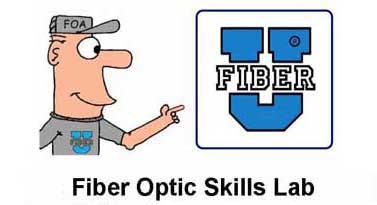Lesson
3: Fiber Optic Cable And Fiber Preparation
Objectives:
From this lesson you should learn:
How to identify typical fiber optic cables
How to prepare cables for pulling
How to prepare cables for splicing or termination
How to strip optical fiber for splicing and termination
Tools And Components
Needed
Cable jacket stripping tools
"Kevlar" scissors to cut strength members
Samples of cable, simplex or zipcord, distribution, loose
tube, armored preferred
Introduction
It is impossible to work in fiber optics without having a
good working knowledge about cables and skills in pulling,
placing and preparing cables for termination and splicing.
In this lesson, we will identify and examine cables, then
prepare them for splicing or termintion by stripping the
cable to expose the coated fibers. Finally we will strip
fibers, the final step before splicing
or termintion.
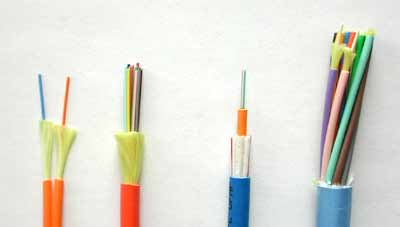
Four popular cable
types: zipcord, distribution, loose tube, breakout
Each type of fiber optic cable requires a special
technique to remove the jacket, strength members and
expose the fibers for splicing or termination. Many of the
types of cable need special tools to remove the jacket and
other cable parts without damaging the fibers. After
exposing fibers, the fibers must be stripped of buffer
coatings for splicing or termination.
Allow plenty of time to complete the exercises without
interruption, although this lesson can be broken into
segments for each cable type.
Safety
 |
Please
Note: This is not the usual online
course - it is intended to guide you as
you learn new skills - the "hands-on"
skills needed to install optical fiber
cable plants. It involves using tools
and components in a realistic manner.
Some of the processes here can be
hazardous, like working with sharp
scraps of optical fiber and chemicals.
In
Lesson 1 you should have familiarized yourself
with the safety procedures - follow them all
the time. Do not work with fiber without eye
protection and a proper work area that is easy
to clean up.
Always wear safety glasses when doing
any of these exercises and dispose of
all scraps properly. |
As
part of Lesson 1, you should have watched the FOA
YouTube Video:
FOA Lecture 2: Safety When Working
With Fiber Optics
Download
a FOA safety poster for your work area.
Background
Review
This "skills" course assumes you have
knowledge of fiber optic cables. If you are new
to fiber optics, you should first complete the
"Fiber U Basic Fiber Optics" course before
attempting the hands-on exercises here or review
the FOA
Guide section on cables or the self-study
course Fiber
U Basic Fiber Optics: Cables.
Hands-On
Lab Instructions
Download the Workbook section on Cables and the VHO
tutorial on Cable Preparation. Watch the videos and/or
read the references on the cable types you have available
for practice. The VHO
"Virtual Hands On" Tutorials take a "step-by-step"
approach to the hands-on processes covered in this
self-study program and the videos will show the
processes in motion. They are both a good way to teach
yourself the processes here - watch the video for the
overview then follow the steps in the VHO web pages.
Hands-On
Assignments:
After reading the workbook section and VHO tutorial Cable
Preparation and watching the videos,
complete these exercises using all the cable types
available to you.
As you finish each section, fill in the worksheet in
the back of the Workbook on Cables. Your completed
worksheets are the records of your having successfully
completed the exercises.
1. Zipcord or Simplex
Cable
Video:. Fiber
Optic Cable, Part 2, Zipcord
Using zipcord or simplex cable, strip the jacket, cut the
fiber off and attach a pulling eye to the cable. Swivel
eyes like those used in the video are available at a
hardware store.
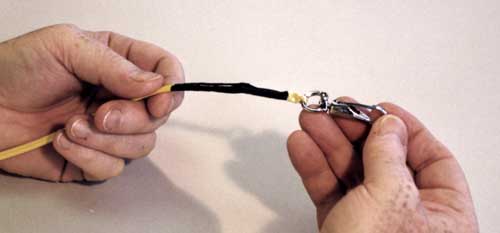
2.
Distribution
Cable
Video:.
Fiber
Optic Cable, Part 3 Distribution Cable
Using samples of distribution cable, strip the jacket and
prepare the cable for termination with an adhesive/polish
connector. Remember the distribution cable will allow the
900 micron tight buffer fiber to be terminated directly
but the connectors must be protected in a patch panel or
box.
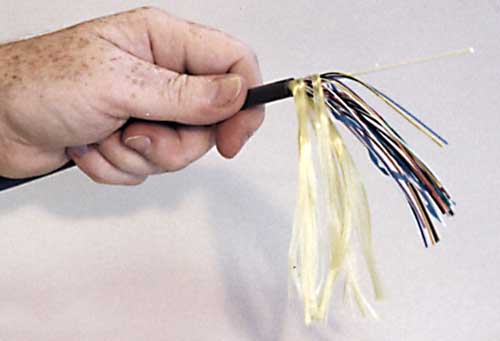
3. Loose Tube Cable
Video:.
Fiber
Optic Cable, Part 5 Loose Tube Cable
Using a sample of loose tube OSP cable, remove the outside
jacket and separate the buffer tubes and strength members.
Cut one of the tubes and expose the fibers. If the cable
is gel-filled, use cleaner to remove the gel.

4. Armored Loose Tube
Cable
Video:.
Fiber
Optic Cable, Part 6, Armored Cable
Using a sample of armored loose tube OSP cable, remove the
outside jacket with armor, inner jacket and separate the
buffer tubes and strength members.
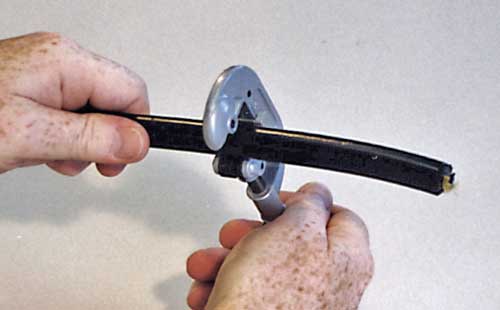
5. Stripping
Fiber
Video:
Fiber
Optic Stripping Tools
After watching the video Fiber
Optic Stripping Tools, use a fiber stripper to strip
off the buffer coating from tight buffer fiber (900micron)
and buffered fiber (250micron). Keep doing it until you
can strip fiber properly every time. Watch when stripping
the fiber that you get the final coating off - some
strippers leave the final coating on the fiber if you
don't fully close the stripper before stripping the
coatings.
6.
Stripping Fiber
After watching the video Fiber
Optic Stripping Tools, or follow
the directions here, use a fiber stripper to strip
off the buffer coating from tight buffer fiber.
Using samples of simplex, zipcord and/or
breakout cable, strip the jacket, cut the strength
members to length with the Kevlar scissors and prepare
the cable for termination with an adhesive/polish
connector. Follow the diagram. Refer to exercise 2 below
for instructions on stripping the fiber buffer coating
to expose the bare fiber.
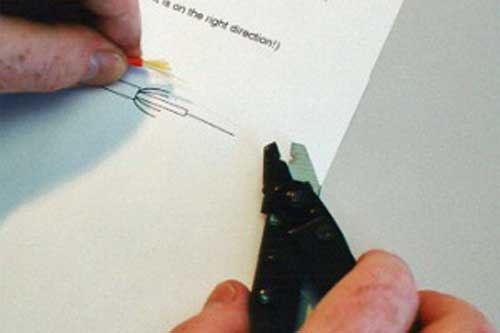
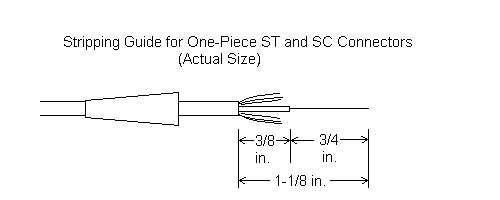
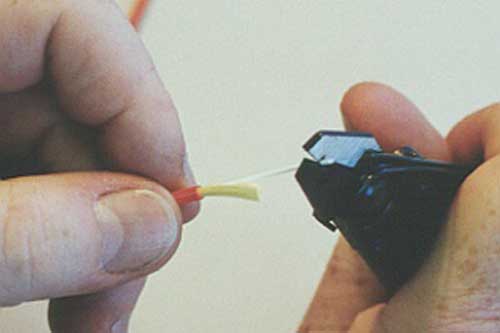
- Test
Your Comprehension - Online
Quiz On Cable
- Have
you completed the Workbook worksheets that are the
records of your having successfully completed the
exercises?
- Next: Lesson
4: Fiber Optic Splicing

Get a "Certificate
of Completion" When You Complete The Course
After you complete all 6 lessons of the Fiber U Basic Skills Lab
Fiber Optics online self-study course, you can
now take an online exam and, when you pass the
exam, get a "Certificate of Completion" for this
course. You should complete all lessons
including taking the quiz ("Test Your
Comprehension") at the end of every lesson. When
you think you are prepared, you can take an
online exam for a nominal fee ($20) which will
give you a "Certificate of Completion" for
this course.
Take the Test to Get Your
Certificate of Completion For This
Course
Return
to Lesson Plan
|
